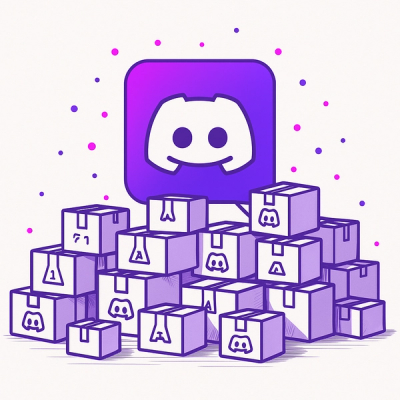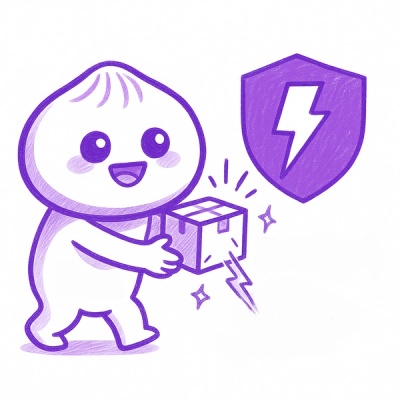
Research
/Security News
Weaponizing Discord for Command and Control Across npm, PyPI, and RubyGems.org
Socket researchers uncover how threat actors weaponize Discord across the npm, PyPI, and RubyGems ecosystems to exfiltrate sensitive data.

Minimal WebGL library.
OGL is a small, effective WebGL library aimed at developers who like minimal layers of abstraction, and are interested in creating their own shaders.
Written in es6 modules with zero dependencies, the API shares many similarities with ThreeJS, however it is tightly coupled with WebGL and comes with much fewer features.
In its design, the library does the minimum abstraction necessary, so devs should still feel comfortable using it in conjunction with native WebGL commands.
Keeping the level of abstraction low helps to make the library easier to understand, extend, and also makes it more practical as a WebGL learning resource.
or
npm i ogl
or
yarn add ogl
Show me what you got! - Explore a comprehensive list of examples, with comments in the source code.
Inspired by the effectiveness of ThreeJS' examples, they will hopefully serve as reference for how to use the library, and to achieve a wide range of techniques.
Even though the source is modular, as a guide, below are the complete component download sizes.
| Component | Size (minzipped) |
|---|---|
| Core | 8kb |
| Math | 6kb |
| Extras | 15kb |
| Total | 29kb |
With tree-shaking applied in a build step, one can expect the final size to be much lighter than the values above.
If installed amongst your project files, importing can be done from one single entry point.
import { ... } from './path/to/src/index.js';
Else if using a bundler or import maps with node modules, then import directly from the installed node module.
import { ... } from 'ogl';
By default, the ES source modules are loaded (src/index.js).
As another alternative, you could load from a CDN, using either the jsdelivr, unpkg or skypack services.
import { ... } from 'https://cdn.jsdelivr.net/npm/ogl';
import { ... } from 'https://unpkg.com/ogl';
import { ... } from 'https://cdn.skypack.dev/ogl';
If you take this route, I would highly recommend defining a specific version (append @x.x.x) to avoid code breaking, rather than fetching the latest version, as per the above links.
As a basic API example, below renders a spinning white cube.
import { Renderer, Camera, Transform, Box, Program, Mesh } from 'ogl';
{
const renderer = new Renderer();
const gl = renderer.gl;
document.body.appendChild(gl.canvas);
const camera = new Camera(gl);
camera.position.z = 5;
function resize() {
renderer.setSize(window.innerWidth, window.innerHeight);
camera.perspective({
aspect: gl.canvas.width / gl.canvas.height,
});
}
window.addEventListener('resize', resize, false);
resize();
const scene = new Transform();
const geometry = new Box(gl);
const program = new Program(gl, {
vertex: /* glsl */ `
attribute vec3 position;
uniform mat4 modelViewMatrix;
uniform mat4 projectionMatrix;
void main() {
gl_Position = projectionMatrix * modelViewMatrix * vec4(position, 1.0);
}
`,
fragment: /* glsl */ `
void main() {
gl_FragColor = vec4(1.0);
}
`,
});
const mesh = new Mesh(gl, { geometry, program });
mesh.setParent(scene);
requestAnimationFrame(update);
function update(t) {
requestAnimationFrame(update);
mesh.rotation.y -= 0.04;
mesh.rotation.x += 0.03;
renderer.render({ scene, camera });
}
}
Here you can play with the above template live in a codesandbox https://codesandbox.io/s/ogl-5i69p
For a simpler use, such as a full-screen shader, more of the core can be omitted as a scene graph (Transform) and projection matrices (Camera) are not necessary. We'll also show how to easily create custom geometry.
import { Renderer, Geometry, Program, Mesh } from 'ogl';
{
const renderer = new Renderer({
width: window.innerWidth,
height: window.innerHeight,
});
const gl = renderer.gl;
document.body.appendChild(gl.canvas);
// Triangle that covers viewport, with UVs that still span 0 > 1 across viewport
const geometry = new Geometry(gl, {
position: { size: 2, data: new Float32Array([-1, -1, 3, -1, -1, 3]) },
uv: { size: 2, data: new Float32Array([0, 0, 2, 0, 0, 2]) },
});
// Alternatively, you could use the Triangle class.
const program = new Program(gl, {
vertex: /* glsl */ `
attribute vec2 uv;
attribute vec2 position;
varying vec2 vUv;
void main() {
vUv = uv;
gl_Position = vec4(position, 0, 1);
}
`,
fragment: /* glsl */ `
precision highp float;
uniform float uTime;
varying vec2 vUv;
void main() {
gl_FragColor.rgb = vec3(0.8, 0.7, 1.0) + 0.3 * cos(vUv.xyx + uTime);
gl_FragColor.a = 1.0;
}
`,
uniforms: {
uTime: { value: 0 },
},
});
const mesh = new Mesh(gl, { geometry, program });
requestAnimationFrame(update);
function update(t) {
requestAnimationFrame(update);
program.uniforms.uTime.value = t * 0.001;
// Don't need a camera if camera uniforms aren't required
renderer.render({ scene: mesh });
}
}
In an attempt to keep things light and modular, the library is split up into three components: Math, Core, and Extras.
The Math component is an extension of gl-matrix, providing instancable classes that extend Array for each of the module types. 8kb when gzipped, it has no dependencies and can be used separately.
The Core is made up of the following:
Any additional layers of abstraction will be included as Extras, and not part of the core as to reduce bloat. These provide a wide breadth of functionality, ranging from simple to advanced.
This is free and unencumbered software released into the public domain.
Anyone is free to copy, modify, publish, use, compile, sell, or distribute this software, either in source code form or as a compiled binary, for any purpose, commercial or non-commercial, and by any means.
In jurisdictions that recognize copyright laws, the author or authors of this software dedicate any and all copyright interest in the software to the public domain. We make this dedication for the benefit of the public at large and to the detriment of our heirs and successors. We intend this dedication to be an overt act of relinquishment in perpetuity of all present and future rights to this software under copyright law.
THE SOFTWARE IS PROVIDED "AS IS", WITHOUT WARRANTY OF ANY KIND, EXPRESS OR IMPLIED, INCLUDING BUT NOT LIMITED TO THE WARRANTIES OF MERCHANTABILITY, FITNESS FOR A PARTICULAR PURPOSE AND NONINFRINGEMENT. IN NO EVENT SHALL THE AUTHORS BE LIABLE FOR ANY CLAIM, DAMAGES OR OTHER LIABILITY, WHETHER IN AN ACTION OF CONTRACT, TORT OR OTHERWISE, ARISING FROM, OUT OF OR IN CONNECTION WITH THE SOFTWARE OR THE USE OR OTHER DEALINGS IN THE SOFTWARE.
For more information, please refer to https://unlicense.org
FAQs
WebGL Library
The npm package ogl receives a total of 77,703 weekly downloads. As such, ogl popularity was classified as popular.
We found that ogl demonstrated a healthy version release cadence and project activity because the last version was released less than a year ago. It has 1 open source maintainer collaborating on the project.
Did you know?

Socket for GitHub automatically highlights issues in each pull request and monitors the health of all your open source dependencies. Discover the contents of your packages and block harmful activity before you install or update your dependencies.

Research
/Security News
Socket researchers uncover how threat actors weaponize Discord across the npm, PyPI, and RubyGems ecosystems to exfiltrate sensitive data.

Security News
Socket now integrates with Bun 1.3’s Security Scanner API to block risky packages at install time and enforce your organization’s policies in local dev and CI.

Research
The Socket Threat Research Team is tracking weekly intrusions into the npm registry that follow a repeatable adversarial playbook used by North Korean state-sponsored actors.